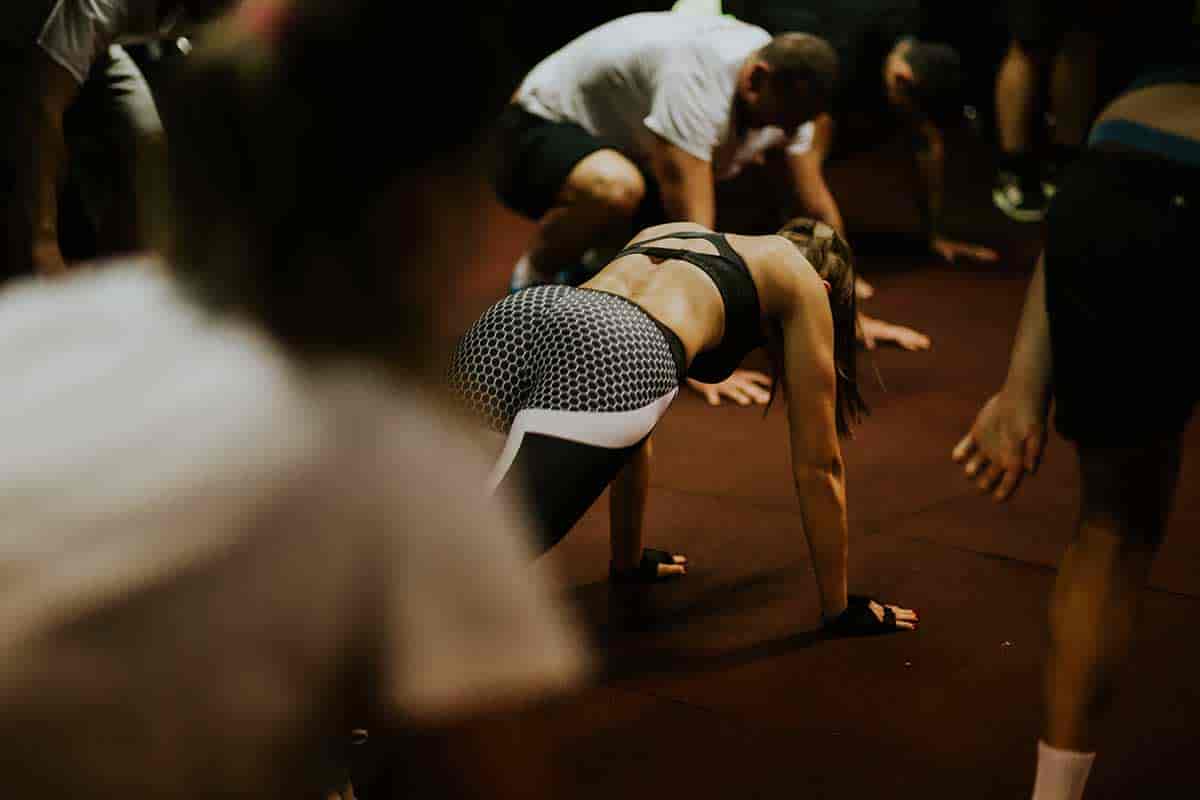Working out is essential to staying fit, as well as maintaining your overall health. Any movement is better for your body than no movement at all, but if you have specific goals in mind, it is important to choose a plan commensurate with your goals.
A great workout to consider is HIIT training, which stands for high-intensity interval training. This is an anaerobic exercise that usually involves some sort of cardio, but can involve strength training, as well.
HIIT training is highly effective at delivering great results and is much different than traditional cardio. HIIT can be great for athletes who are trying to maximize their output and elevate their capabilities, but is it suitable for everyone all the time? Read on to learn more about HIIT training and some HIIT workouts you can implement today.
Article Contents
What is HIIT Training?
Like any workout, it is imperative to understand what the exercise entails before attempting it or incorporating it into your fitness routine. Thoroughly understanding your workout will help prevent injuries and ensure it is appropriate to partake in, especially when it is high-intensity.
So what exactly is HIIT training? Well, to understand what HIIT training is, you first must understand what is meant by high-intensity. A high-intensity workout will get your heart rate up to 75% of its maximum capacity for ten minutes or more in duration. High-intensity workouts can be difficult to complete or participate in if you are injured, have not exercised recently, or have a pre-existing health condition.
As its name suggests, when participating in HIIT training, you are working in intervals. HIIT training alternates high-intensity exercise with moments of rest. These intervals will last various amounts of time depending on the particular regimen.
It is possible to participate in interval training without doing a HIIT workout, so it is important to know exactly what the difference is to ensure you are getting the most out of your workout, especially if you are aiming to complete a HIIT workout.
In a true HIIT workout, you will have more rest time than work time, as this allows you to repeatedly hit your maximum heart rate. For example, you might work at a high level of intensity for 10 seconds, then spend 45 seconds rest. Rest time allows you to recover and prepare to again output your maximum effort.
HIIT workouts are traditionally cardio-based, but they can incorporate strength training. In addition to being high-intensity, HIIT workouts are also high-impact. so make sure you have a proper form before adding weights, and that you stretch adequately before your workout to avoid injury.
You may need to build up to this kind of workout due to its intensity, so make sure you are well-informed and qualified to partake in this kind of exercise. Generally speaking, it is a safe form of exercise when done properly, but like all exercises, it is important to understand what you are about to perform.
Is HIIT Better Than Cardio?
HIIT and traditional cardio are two very different workouts. During HIIT training, you are alternating between short bursts of high-intensity work and rest. During traditional cardio, you are working steadily without any rest, but at a lower intensity.
Because HIIT and cardio are so different, the reasons you might participate in either also differs. Which workout you choose will vary greatly on your fitness goals, as well as your current shape.
If your goal is to lose weight, you need an efficient, time-sensitive workout, or are trying to maximize your anaerobic output, HIIT training is an excellent option. If you are trying to build endurance, are looking for exercise that is easy on your joints, or are training for a long-distance race, traditional cardio is a better option.
Because of its high intensity and impact, HIIT is not safe for beginners. If you are new to exercise, consult with a doctor before deciding what type of exercise you are going to participate in train.
What's the Biggest Difference Between HIIT and Cardio?
Generally speaking, HIIT is a type of cardio. It can incorporate strength training but usually consists of cardio exercises. HIIT is high-intensity, where traditional cardio is low-intensity.
Beyond their basic differences, HIIT and traditional cardio vary greatly. HIIT, when done properly, is an anaerobic exercise, while traditional cardio is aerobic.
HIIT workouts are also much shorter in time than traditional cardio workouts. Traditional cardio workouts usually entail miles of work, taking a great amount of time, while HIIT workouts are brief in nature, aiming to maximize your output in the least amount of time.
Not only are HIIT workouts shorter than traditional cardio, but they also give you rest time. Traditional cardio workouts allow for little if any rest.
Is HIIT Everyday Enough to Lose Weight?
Like all workouts, understanding how to perform each move, as well as the tenets of the workout, is imperative to the success of your workout. Before trying a HIIT workout, make sure you are familiar with how your body will be moving, and adequately prepare by stretching.
To do a HIIT workout, you complete a high-intensity burst followed by a significant period of rest. Rest gives your body time to recover so you can do it again. After your initial burst and rest, you repeat. The repeat might differ in time, or in what move you are completing.
How Do HIIT Workouts Work?
Past students know that Santosha is a great choice, but why?
- International certification – Your RYT-200 Yoga Alliance certification will allow you to teach yoga anywhere in the world.
- Established Yoga school – Santosha has taught thousands of much-sought-after yoga teachers over the past 12 years. It has enriched the lives of so many people and will continue to do so.
- Flexible home study – The class is 100% online. You can join live online classes or watch taped recordings on your own time. So, no matter your time zone or responsibilities, you can fully participate in the course.
- Start anytime – Since everything is taped, there no reason why you can’t start today. You’ll get access to video modules, posture labs, teaching sessions and Asana, Pranayama and Meditation classes, all at the click of a mouse.
- Study online and save – The course is only $1,500 AUD; there are also flexible payment plans. You’ll be able to complete online course in your own time, and you’ll receive lifetime access to all course materials.
- Interactive live training – Even though the entire course is accessible to you anytime, anywhere, through taped sessions, you can also join live if you choose. You can access live classes, mentoring sessions and Q&As via Zoom, allowing you to have tons of support from your teachers.
HIIT Training: Different Levels of Difficulty
HIIT workouts are usually categorized into the following categories, ascending into higher levels of difficulty:
- Beginner
- Intermediate
- Advanced
- Tabata
Beginner workouts are suitable for those who are new to HIIT. If you have never tried HIIT, or are unsure of your capacity, try a beginner HIIT workout. These will also help you gain a basic understanding of the workout type as a whole and ensure you are performing each move with proper form.
Intermediate workouts are a step up from beginner workouts. They will be a little higher in intensity, and the moves might be more complex. The duration of work will also be greater, and the ratio of work time to rest time will increase.
Advanced workouts are more difficult than intermediate workouts. The intensity level will increase, as will the complexity of the moves. The ratio of work time to rest time will be even greater than that of an intermediate HIIT workout.
Tabata workouts are the most intense of all HIIT workouts. In Tabata, the ratio of work time to rest time is 2:1, meaning you will be working twice as long as you are resting. These workouts are very difficult to complete and should only be performed if you are physically capable. Most people will need to work up to completing a Tabata workout.
Make sure you are completely familiar with each option and have properly vetted the types before determining which category you should start with. If you are unsure, try a workout a level below what you think you are capable of and adjust from there. Choosing a safer option will prevent injury and help maintain your overall health.
What are Examples of HIIT training?
Your HIIT workout might consist of 30 seconds of jump roping followed by a minute or two of rest, then repeated two or three more times.
It could also consist of 10 seconds of squat jumps followed by 30 seconds of rest, 10 seconds of high knees followed by 30 seconds of rest, and finished with 10 seconds burpees followed by 30 seconds rest.
Although HIIT workouts are efficient and short in time, they typically last more than 15 minutes, so many of your workouts will be circuits, meaning the moves or the order of the moves will repeat.
There are hundreds of cardio moves that can be incorporated into a HIIT workout. If you are looking for variety in your workout routine, there are plenty of ways to keep your HIIT workout feeling new and interesting.
If you are completing a strength HIIT workout, there are still several options for moves. Here are things you can do in a HIIT workout for strength training:
- Push-ups
- Squats
- Kettlebell
By searching the internet, downloading a fitness app, or hiring a trainer, you can find a HIIT workout that meets your needs. These resources will also be able to give you a progressive plan to follow that gradually increases in intensity as you gain strength and agility. Following a plan will ensure you are continuing to meet your needs as you progress.
Because of the variety in HIIT workouts and infinite ways the human body can move, there is a HIIT workout available for everyone to enjoy. Finding one you enjoy will keep you engaged and motivated to continue working out.
Outro
HIIT workouts are a fabulous way to lose weight, increase your athletic performance, and maximize your physical capacity. And although HIIT is important to integrate into your overall exercise regimen, it should not be your sole form of exercise. Make sure you are keeping a balanced exercise routine to benefit your overall health.




